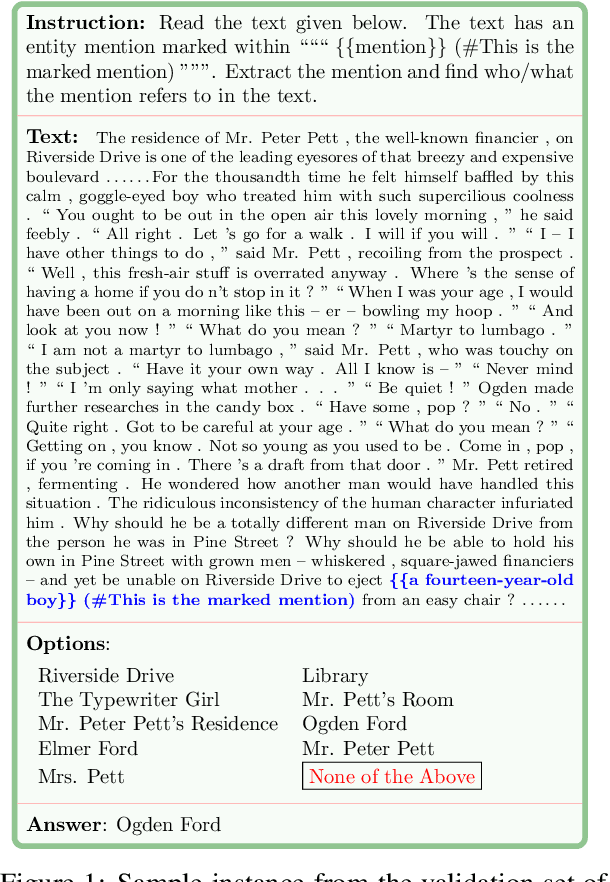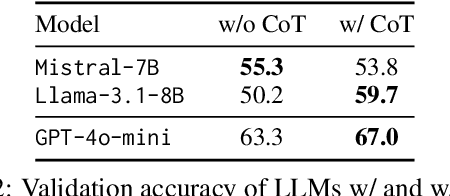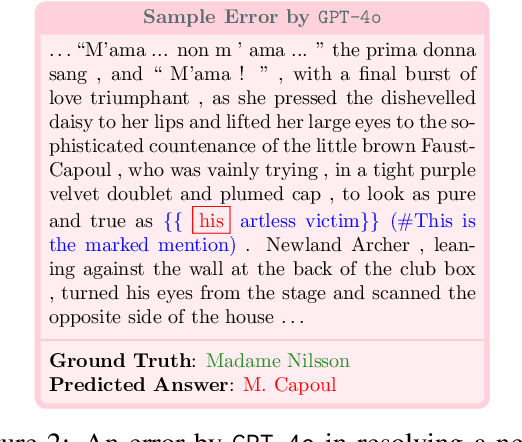Vineet Gandhi
CVIT, IIIT Hyderabad
EditIQ: Automated Cinematic Editing of Static Wide-Angle Videos via Dialogue Interpretation and Saliency Cues
Feb 04, 2025Abstract:We present EditIQ, a completely automated framework for cinematically editing scenes captured via a stationary, large field-of-view and high-resolution camera. From the static camera feed, EditIQ initially generates multiple virtual feeds, emulating a team of cameramen. These virtual camera shots termed rushes are subsequently assembled using an automated editing algorithm, whose objective is to present the viewer with the most vivid scene content. To understand key scene elements and guide the editing process, we employ a two-pronged approach: (1) a large language model (LLM)-based dialogue understanding module to analyze conversational flow, coupled with (2) visual saliency prediction to identify meaningful scene elements and camera shots therefrom. We then formulate cinematic video editing as an energy minimization problem over shot selection, where cinematic constraints determine shot choices, transitions, and continuity. EditIQ synthesizes an aesthetically and visually compelling representation of the original narrative while maintaining cinematic coherence and a smooth viewing experience. Efficacy of EditIQ against competing baselines is demonstrated via a psychophysical study involving twenty participants on the BBC Old School dataset plus eleven theatre performance videos. Video samples from EditIQ can be found at https://editiq-ave.github.io/.
Advancing NAM-to-Speech Conversion with Novel Methods and the MultiNAM Dataset
Dec 25, 2024Abstract:Current Non-Audible Murmur (NAM)-to-speech techniques rely on voice cloning to simulate ground-truth speech from paired whispers. However, the simulated speech often lacks intelligibility and fails to generalize well across different speakers. To address this issue, we focus on learning phoneme-level alignments from paired whispers and text and employ a Text-to-Speech (TTS) system to simulate the ground-truth. To reduce dependence on whispers, we learn phoneme alignments directly from NAMs, though the quality is constrained by the available training data. To further mitigate reliance on NAM/whisper data for ground-truth simulation, we propose incorporating the lip modality to infer speech and introduce a novel diffusion-based method that leverages recent advancements in lip-to-speech technology. Additionally, we release the MultiNAM dataset with over $7.96$ hours of paired NAM, whisper, video, and text data from two speakers and benchmark all methods on this dataset. Speech samples and the dataset are available at \url{https://diff-nam.github.io/DiffNAM/}
MRI2Speech: Speech Synthesis from Articulatory Movements Recorded by Real-time MRI
Dec 25, 2024Abstract:Previous real-time MRI (rtMRI)-based speech synthesis models depend heavily on noisy ground-truth speech. Applying loss directly over ground truth mel-spectrograms entangles speech content with MRI noise, resulting in poor intelligibility. We introduce a novel approach that adapts the multi-modal self-supervised AV-HuBERT model for text prediction from rtMRI and incorporates a new flow-based duration predictor for speaker-specific alignment. The predicted text and durations are then used by a speech decoder to synthesize aligned speech in any novel voice. We conduct thorough experiments on two datasets and demonstrate our method's generalization ability to unseen speakers. We assess our framework's performance by masking parts of the rtMRI video to evaluate the impact of different articulators on text prediction. Our method achieves a $15.18\%$ Word Error Rate (WER) on the USC-TIMIT MRI corpus, marking a huge improvement over the current state-of-the-art. Speech samples are available at \url{https://mri2speech.github.io/MRI2Speech/}
TIDE: Training Locally Interpretable Domain Generalization Models Enables Test-time Correction
Nov 25, 2024
Abstract:We consider the problem of single-source domain generalization. Existing methods typically rely on extensive augmentations to synthetically cover diverse domains during training. However, they struggle with semantic shifts (e.g., background and viewpoint changes), as they often learn global features instead of local concepts that tend to be domain invariant. To address this gap, we propose an approach that compels models to leverage such local concepts during prediction. Given no suitable dataset with per-class concepts and localization maps exists, we first develop a novel pipeline to generate annotations by exploiting the rich features of diffusion and large-language models. Our next innovation is TIDE, a novel training scheme with a concept saliency alignment loss that ensures model focus on the right per-concept regions and a local concept contrastive loss that promotes learning domain-invariant concept representations. This not only gives a robust model but also can be visually interpreted using the predicted concept saliency maps. Given these maps at test time, our final contribution is a new correction algorithm that uses the corresponding local concept representations to iteratively refine the prediction until it aligns with prototypical concept representations that we store at the end of model training. We evaluate our approach extensively on four standard DG benchmark datasets and substantially outperform the current state-ofthe-art (12% improvement on average) while also demonstrating that our predictions can be visually interpreted
IdentifyMe: A Challenging Long-Context Mention Resolution Benchmark
Nov 12, 2024



Abstract:Recent evaluations of LLMs on coreference resolution have revealed that traditional output formats and evaluation metrics do not fully capture the models' referential understanding. To address this, we introduce IdentifyMe, a new benchmark for mention resolution presented in a multiple-choice question (MCQ) format, commonly used for evaluating LLMs. IdentifyMe features long narratives and employs heuristics to exclude easily identifiable mentions, creating a more challenging task. The benchmark also consists of a curated mixture of different mention types and corresponding entities, allowing for a fine-grained analysis of model performance. We evaluate both closed- and open source LLMs on IdentifyMe and observe a significant performance gap (20-30%) between the state-of-the-art sub-10B open models vs. closed ones. We observe that pronominal mentions, which have limited surface information, are typically much harder for models to resolve than nominal mentions. Additionally, we find that LLMs often confuse entities when their mentions overlap in nested structures. The highest-scoring model, GPT-4o, achieves 81.9% accuracy, highlighting the strong referential capabilities of state-of-the-art LLMs while also indicating room for further improvement.
Towards Improving NAM-to-Speech Synthesis Intelligibility using Self-Supervised Speech Models
Jul 26, 2024



Abstract:We propose a novel approach to significantly improve the intelligibility in the Non-Audible Murmur (NAM)-to-speech conversion task, leveraging self-supervision and sequence-to-sequence (Seq2Seq) learning techniques. Unlike conventional methods that explicitly record ground-truth speech, our methodology relies on self-supervision and speech-to-speech synthesis to simulate ground-truth speech. Despite utilizing simulated speech, our method surpasses the current state-of-the-art (SOTA) by 29.08% improvement in the Mel-Cepstral Distortion (MCD) metric. Additionally, we present error rates and demonstrate our model's proficiency to synthesize speech in novel voices of interest. Moreover, we present a methodology for augmenting the existing CSTR NAM TIMIT Plus corpus, setting a benchmark with a Word Error Rate (WER) of 42.57% to gauge the intelligibility of the synthesized speech. Speech samples can be found at https://nam2speech.github.io/NAM2Speech/
Major Entity Identification: A Generalizable Alternative to Coreference Resolution
Jun 20, 2024Abstract:The limited generalization of coreference resolution (CR) models has been a major bottleneck in the task's broad application. Prior work has identified annotation differences, especially for mention detection, as one of the main reasons for the generalization gap and proposed using additional annotated target domain data. Rather than relying on this additional annotation, we propose an alternative formulation of the CR task, Major Entity Identification (MEI), where we: (a) assume the target entities to be specified in the input, and (b) limit the task to only the frequent entities. Through extensive experiments, we demonstrate that MEI models generalize well across domains on multiple datasets with supervised models and LLM-based few-shot prompting. Additionally, the MEI task fits the classification framework, which enables the use of classification-based metrics that are more robust than the current CR metrics. Finally, MEI is also of practical use as it allows a user to search for all mentions of a particular entity or a group of entities of interest.
VELOCITI: Can Video-Language Models Bind Semantic Concepts through Time?
Jun 16, 2024Abstract:Compositionality is a fundamental aspect of vision-language understanding and is especially required for videos since they contain multiple entities (e.g. persons, actions, and scenes) interacting dynamically over time. Existing benchmarks focus primarily on perception capabilities. However, they do not study binding, the ability of a model to associate entities through appropriate relationships. To this end, we propose VELOCITI, a new benchmark building on complex movie clips and dense semantic role label annotations to test perception and binding in video language models (contrastive and Video-LLMs). Our perception-based tests require discriminating video-caption pairs that share similar entities, and the binding tests require models to associate the correct entity to a given situation while ignoring the different yet plausible entities that also appear in the same video. While current state-of-the-art models perform moderately well on perception tests, accuracy is near random when both entities are present in the same video, indicating that they fail at binding tests. Even the powerful Gemini 1.5 Flash has a substantial gap (16-28%) with respect to human accuracy in such binding tests.
SARI: Simplistic Average and Robust Identification based Noisy Partial Label Learning
Feb 07, 2024



Abstract:Partial label learning (PLL) is a weakly-supervised learning paradigm where each training instance is paired with a set of candidate labels (partial label), one of which is the true label. Noisy PLL (NPLL) relaxes this constraint by allowing some partial labels to not contain the true label, enhancing the practicality of the problem. Our work centers on NPLL and presents a minimalistic framework called SARI that initially assigns pseudo-labels to images by exploiting the noisy partial labels through a weighted nearest neighbour algorithm. These pseudo-label and image pairs are then used to train a deep neural network classifier with label smoothing and standard regularization techniques. The classifier's features and predictions are subsequently employed to refine and enhance the accuracy of pseudo-labels. SARI combines the strengths of Average Based Strategies (in pseudo labelling) and Identification Based Strategies (in classifier training) from the literature. We perform thorough experiments on seven datasets and compare SARI against nine NPLL and PLL methods from the prior art. SARI achieves state-of-the-art results in almost all studied settings, obtaining substantial gains in fine-grained classification and extreme noise settings.
Real Time GAZED: Online Shot Selection and Editing of Virtual Cameras from Wide-Angle Monocular Video Recordings
Nov 27, 2023



Abstract:Eliminating time-consuming post-production processes and delivering high-quality videos in today's fast-paced digital landscape are the key advantages of real-time approaches. To address these needs, we present Real Time GAZED: a real-time adaptation of the GAZED framework integrated with CineFilter, a novel real-time camera trajectory stabilization approach. It enables users to create professionally edited videos in real-time. Comparative evaluations against baseline methods, including the non-real-time GAZED, demonstrate that Real Time GAZED achieves similar editing results, ensuring high-quality video output. Furthermore, a user study confirms the aesthetic quality of the video edits produced by the Real Time GAZED approach. With these advancements in real-time camera trajectory optimization and video editing presented, the demand for immediate and dynamic content creation in industries such as live broadcasting, sports coverage, news reporting, and social media content creation can be met more efficiently.
 Add to Chrome
Add to Chrome Add to Firefox
Add to Firefox Add to Edge
Add to Edge